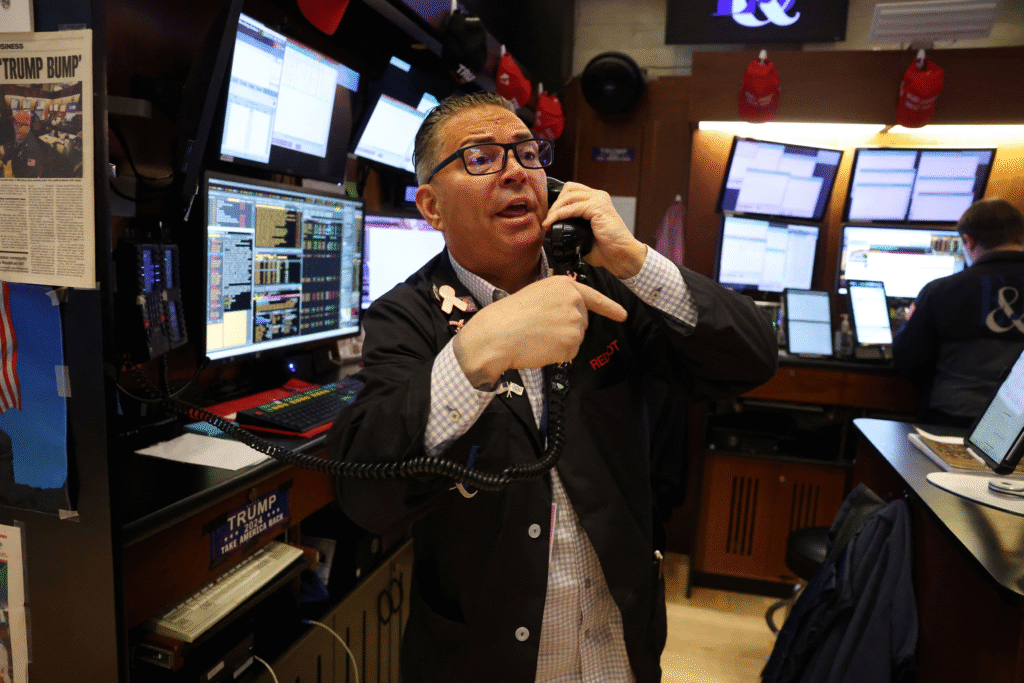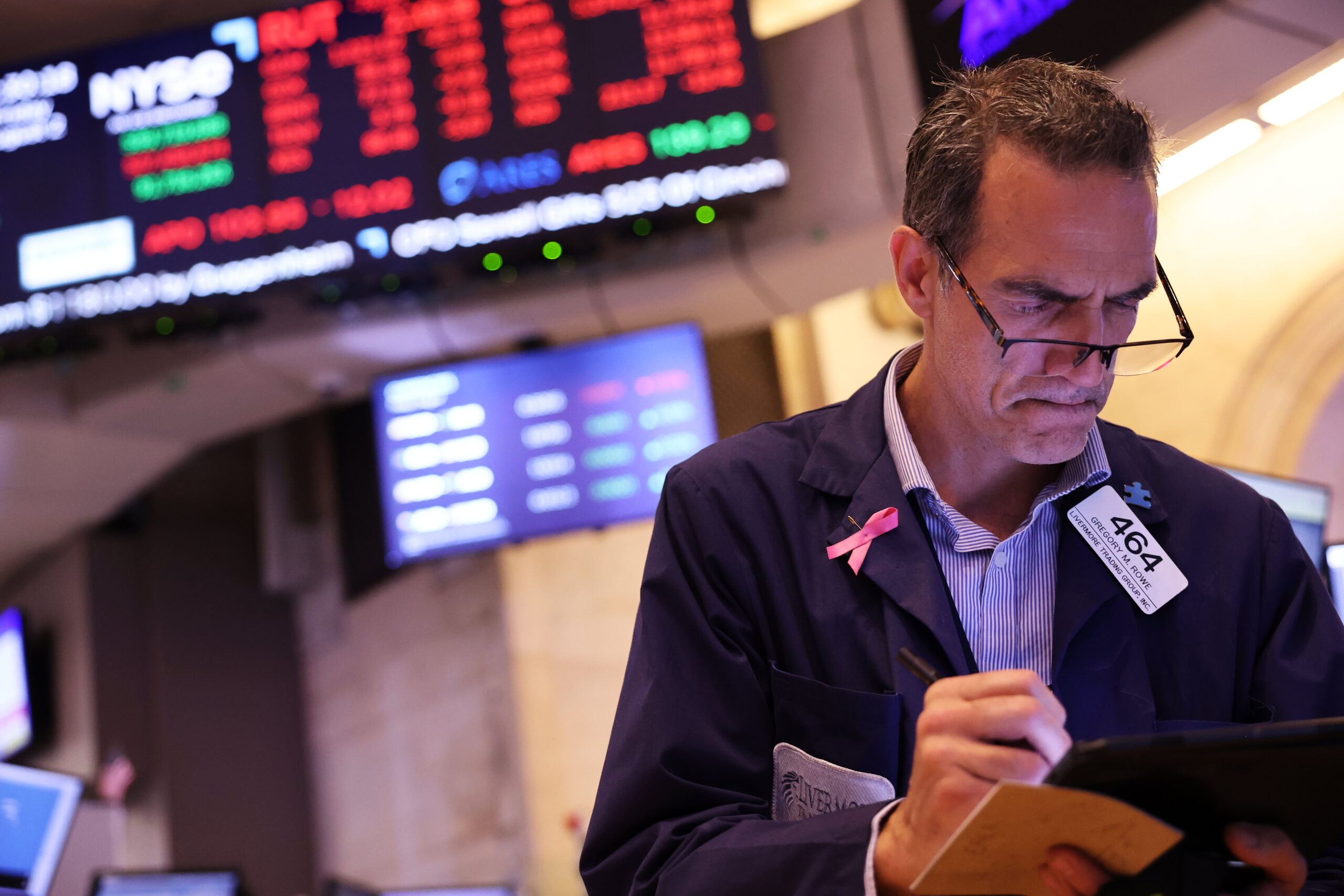
The U.S. stock market experienced significant volatility as investors processed the latest employment data and political developments. Major indices including the Dow Jones Industrial Average, S&P 500, and Nasdaq showed mixed movements, reflecting a market caught between optimism about economic resilience and concerns over inflation and geopolitical uncertainty. Amid this uncertain environment, individual stocks such as Nvidia surged while Apple shares dipped, highlighting the divergent forces shaping today’s trading.
Strong Jobs Report Sparks Mixed Reactions
The recent U.S. non-farm payroll report delivered a surprise to many market participants. Contrary to expectations of a slowdown, job growth significantly outpaced forecasts, signaling ongoing strength in the labor market. Employers across a broad range of industries continued to hire aggressively, underscoring resilient consumer demand and business activity despite rising interest rates.
This surge in employment is a double-edged sword for investors. On one hand, it affirms the economy’s capacity to grow and supports consumer spending, a critical engine for economic expansion. A healthy labor market generally translates into increased wages and higher disposable incomes, fostering greater retail sales and business investment.
On the other hand, robust job growth raises red flags about inflationary pressures. When demand for labor exceeds supply, wages tend to rise, and businesses may pass on higher labor costs to consumers, driving prices up. This wage-price inflation loop complicates the Federal Reserve’s mandate to balance maximum employment with price stability. The possibility that inflation may remain sticky has led markets to speculate that the Fed could maintain higher interest rates for longer, increasing borrowing costs and potentially slowing future growth.
These conflicting signals led to a cautious market response. Stock futures fluctuated during early trading, with the Dow Jones and S&P 500 showing mixed gains and losses. The Nasdaq, sensitive to growth outlooks, exhibited heightened volatility as investors reassessed their positions amid the new data.
Divergent Sector Performances Reflect Market Complexity
The day’s trading revealed a stark divergence among sectors, illustrating the complexity of the current economic landscape. Technology stocks were particularly volatile, with Nvidia Corporation (NVDA) emerging as a standout performer. The chipmaker’s shares climbed sharply, propelled by strong demand for its graphics processing units (GPUs) in artificial intelligence and gaming applications. Nvidia’s robust earnings report and upbeat forward guidance further buoyed investor confidence.
Nvidia has positioned itself at the forefront of the AI revolution, supplying hardware crucial for data centers and machine learning models. The company’s expanding footprint in both consumer and enterprise markets positions it to benefit from secular growth trends in computing. Its ability to maintain high profit margins amid competitive pressures has made it a favorite among growth-oriented investors.
In contrast, Apple Inc. (AAPL) experienced a decline in its stock price. Profit-taking after a recent rally, concerns about supply chain disruptions, and worries over softer consumer spending amid inflationary pressures contributed to the selloff. Apple’s exposure to global supply chains, particularly in China, has raised questions about product availability and timing for new releases.
The technology sector’s sensitivity to Federal Reserve policy changes also weighed on Apple and other mega-cap stocks. Higher interest rates increase the discount rate applied to future earnings, putting pressure on valuations even for fundamentally strong companies.
Beyond technology, other sectors responded differently based on broader economic forces. Energy stocks gained support from fluctuations in global oil prices, influenced by geopolitical events and supply-demand imbalances. Financials showed gains as expectations of higher interest rates promised improved lending margins. Meanwhile, consumer discretionary stocks were mixed, reflecting uneven consumer confidence amid rising costs.
Political Tensions Add to Market Uncertainty
Complicating the market narrative were recent statements from former President Donald Trump, which injected an additional layer of uncertainty. His warnings about upcoming political events heightened investor sensitivity to potential policy changes, electoral risks, and geopolitical instability.
Political risk often drives volatility in financial markets as investors recalibrate expectations about regulatory environments, taxation, and international relations. Trump’s remarks stirred caution among traders, who responded by trimming riskier assets and seeking safer investments. This risk-off sentiment partially offset positive economic signals and contributed to the market’s choppy performance.
The interaction between economic fundamentals and political developments underscores the challenges facing investors in navigating a complex landscape where multiple, sometimes contradictory forces influence asset prices.

Federal Reserve’s Stance Remains Pivotal
At the heart of market focus remains the Federal Reserve and its monetary policy decisions. The central bank’s balancing act—curbing inflation while supporting growth—has never been more critical. The strong jobs report complicates the Fed’s outlook, suggesting that the economy remains robust but inflation risks persist.
Historically, the Fed has adjusted interest rates in response to labor market conditions. The unexpectedly strong payroll data suggests that the central bank may opt to maintain or even increase rates to temper inflationary pressures. Higher borrowing costs can slow consumer spending and business investment, cooling the economy but also raising the risk of recession if tightening is too aggressive.
Market participants will be closely watching upcoming Fed communications for hints on the future path of rates. Any signals of prolonged tightening could weigh on stocks, while indications of a more dovish stance might spur rallies.
Corporate Earnings Season Adds Insight and Uncertainty
Adding nuance to the market picture is the ongoing corporate earnings season. Companies across industries are reporting results that provide clues about how they are managing inflation, supply chain challenges, and shifting consumer behavior.
Technology firms like Nvidia that beat expectations and provide optimistic guidance are reinforcing confidence in sectors tied to innovation and long-term growth. Conversely, companies facing margin pressure, slowing sales, or operational hurdles are fueling caution.
Investors use earnings reports to recalibrate portfolios based on fundamentals rather than solely on macroeconomic or political headlines. This focus on corporate health may lead to differentiated performance across sectors, driving further volatility.
Navigating the Current Market Environment
In this complex setting of strong economic data, political tension, and corporate variability, investors must exercise caution and strategic insight. Diversification remains a key tenet to mitigate risks associated with any single sector or geopolitical event.
Allocating assets across various industries and geographic regions can help cushion portfolios against localized shocks. Investors might also consider emphasizing companies with robust balance sheets, strong pricing power, and resilient demand to weather inflationary pressures.
Staying informed about Federal Reserve decisions, economic indicators, and political developments is essential to anticipate potential market shifts. In volatile markets, maintaining a long-term perspective while remaining agile can help manage risk and capture opportunities.
Conclusion: A Market at a Crossroads
Today’s market action reflects a delicate balance between optimism fueled by strong labor market data and caution driven by inflation concerns and political uncertainty. Nvidia’s rally exemplifies how innovation can propel growth despite broader risks, while Apple’s pullback illustrates the challenges facing even the largest companies amid a shifting landscape.
Investors must navigate an environment where economic strength and inflation fears coexist, and where political developments can sway sentiment suddenly. Staying informed, diversified, and flexible will be crucial strategies as markets continue to grapple with these multifaceted forces in the weeks and months ahead.

